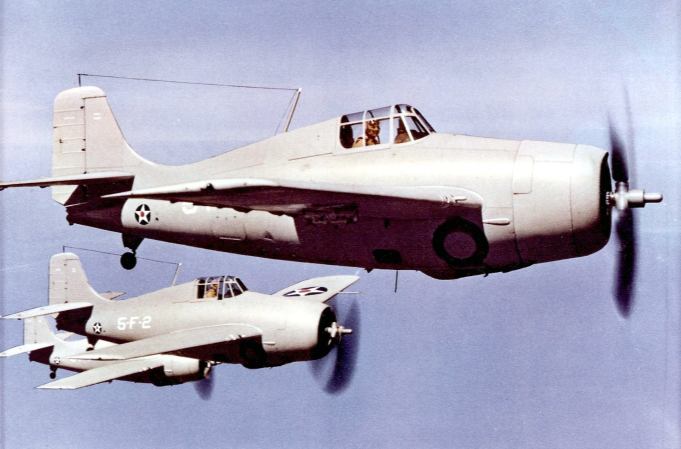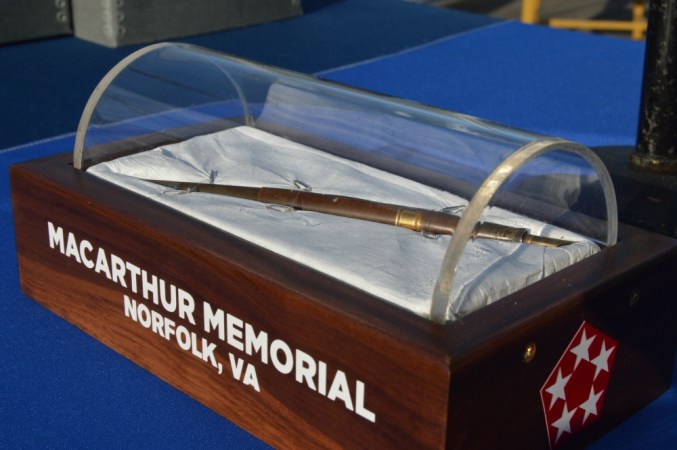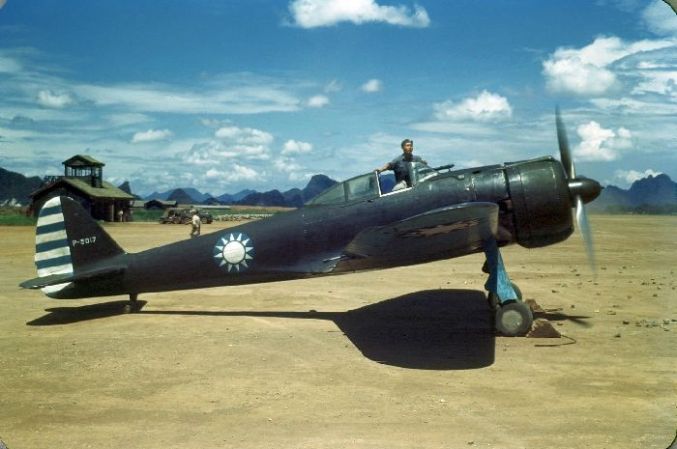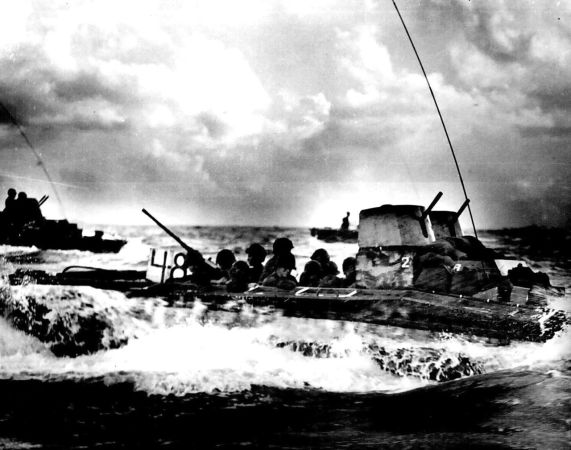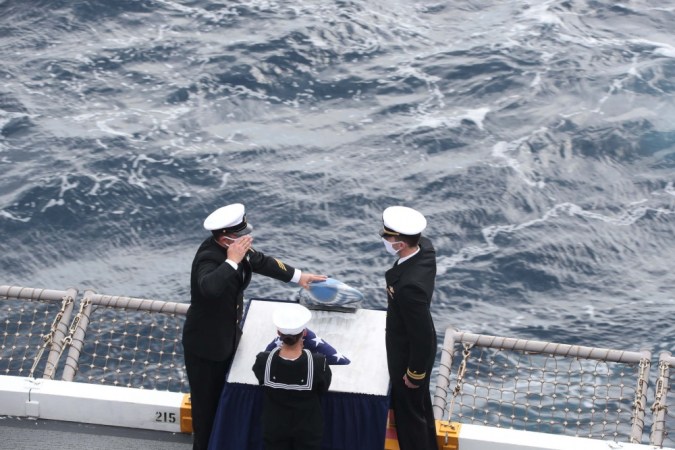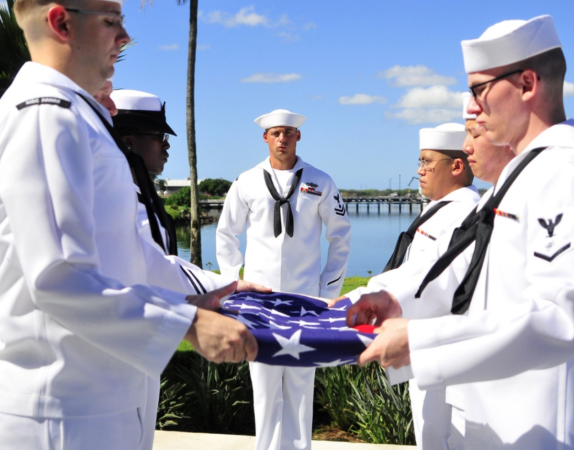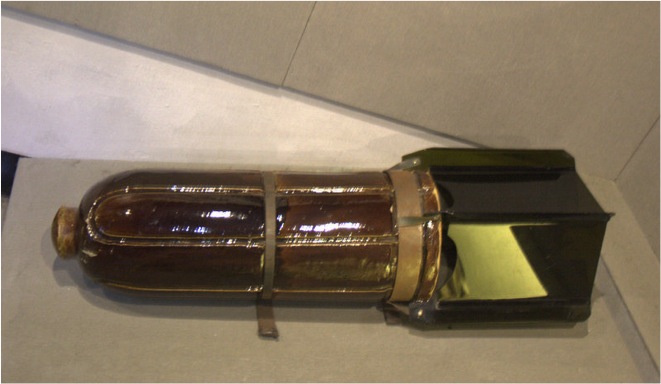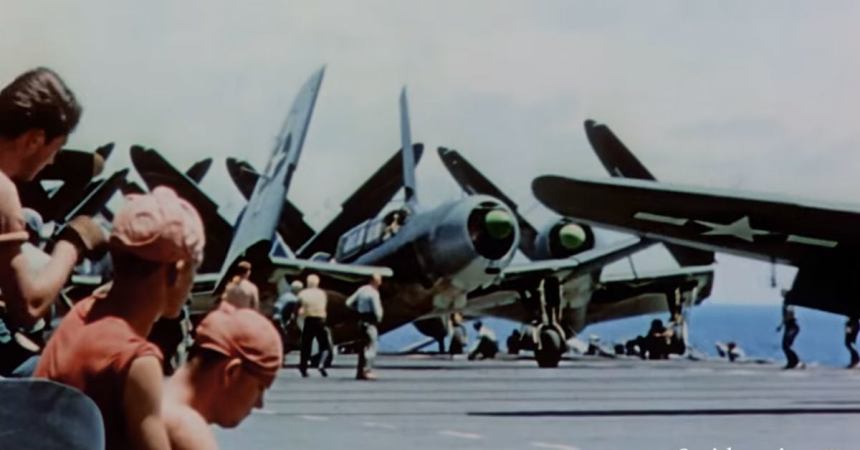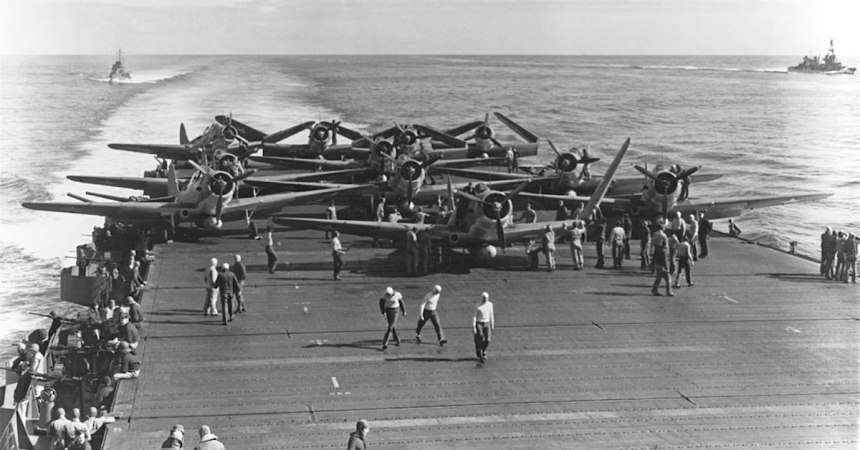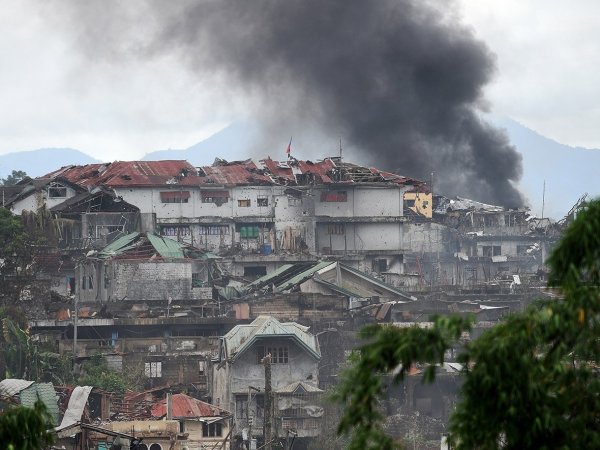The Battle of the Philippine Sea was the kick that broke down the door to the Philippines and the Japanese home islands during World War II. The American 5th Fleet squared off against the Imperial Japanese Navy’s 1st Mobile Fleet in a fight that would help decide the success of the ongoing Marine invasion of the Marianas Islands and determine which side controlled the air surrounding Japan.
This footage from the Smithsonian Channel shows what sailors and pilots actually experienced during the largest ever carrier-to-carrier battle.
The battle took place June 19-20 when Japanese Adm. Ozawa Jisaburo sent the bulk of Japan’s remaining fleet at the larger, stronger, and better-trained American fleet.
It was to be a gamble for the Japanese no matter what, but it’s impossible that Jisaburo knew just how badly the next two days would go for him and the rest of the Japanese forces. The Japanese chose this engagement as the “decisive battle,” and pitted all serviceable ships and planes in range into the fight in order to break the back of the American amphibious forces.
But problems for Japan began before the battle. On June 15, an American sub spotted the Japanese fleet headed toward the islands, allowing the U.S. commanders to favorably redistribute their forces for the massive surface and aerial fight to come.

A plane lands on the USS Lexington during the Battle of the Philippine Sea.
(U.S Navy)
The American fleet had a thick screen of anti-aircraft guns on battleships and heavy cruisers positioned ahead of the escort and fleet carriers. They had almost twice as many carriers and about 20 percent more planes. U.S. pilots and crews were well-trained veterans flying against predominantly green, under-trained pilots that were rushed into place after previous losses, like the Battle of Midway.
As Japan’s first wave thundered toward the American fleet, U.S. defenders picked them up on radar and began attacking them with anti-aircraft fire as planes readied for take off. The U.S. AA fire was tipped by a then-top-secret piece of technology, the proximity fuse.
These fuses used radar to determine their distance from a plane and then detonated at an optimal range, drastically increasing the chance that shrapnel would kill the pilot or destroy the targeted plane.

The Imperial Japanese Navy’s 1st Fleet tries to maneuver out of harm’s way June 20, 1944, during the Battle of the Philippine Sea.
(U.S. Navy)
And then the U.S. planes took to the air. The Americans, with better crews and radar, facing Japanese wings broken up by anti-aircraft fire, were able to absolutely slaughter the enemy. It would later be described as the “Great Marianas Turkey Shoot.” The Japanese units suffered so much damage that some lost their way back to ship and were attacked while trying to reach the friendly airfield on Guam.
But of course, a group of naval aviators in a carrier battle don’t want to just take down the enemy planes — they also want a piece of the carriers. Sinking just one of those can set the enemy industry back a few years’ worth of mining, smelting, and ship construction.
American planes failed to find the Japanese fleet on the first day of battle, but U.S. submarines spotted two fleet carriers, the Taiho and Shokaku, and sank them with torpedoes.

A Japanese carrier attempts to outmaneuver American bombs and other ordnance during the Battle of the Philippine Sea.
(U.S. Navy)
Overnight, the two fleets maneuvered around one another and put planes up once again the following morning. Again, the forces clashed and America came away the clear winner. The American planes hunted for the fleet and, this time, spotted it late in the afternoon.
Despite the setting sun, America decided to press it’s luck and a torpedo plane managed to sink a third Japanese fleet carrier, the Hiyo.
All told, America destroyed well over 500 aircraft, sank five ships (including three carriers), and protected the invasion forces at Saipan. The engagement cost the U.S. over 100 sailors and aircraft as well as a battleship, but so weakened the Japanese navy that it was seen as a sort of second Midway, permanently tipping the balance of power even further in America’s direction.




